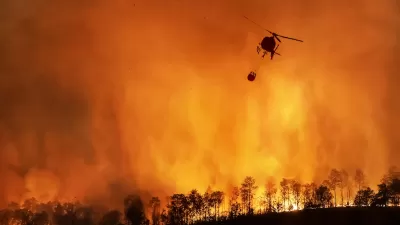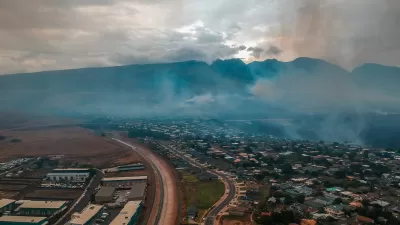As Castle Rock faces an increasing threat of wildfires, town officials urge residents to use the recommendations in the plan to eliminate risks and protect their homes against future blazes.

Castle Rock, located 30 miles south of Denver in a "very high risk" wildfire zone, has adopted a Community Wildfire Protection Plan aimed at making residents aware of hazards and regulating the design of buildings and surrounding vegetation, reports John Aguilar. According to the plan, local homes are threatened by "Flammable outbuildings, decks, projections, and fences," "decadent timber stands," and "natural and ornamental vegetation close to structures."
According to Aguilar, "It’s a hazard rating that has taken on a sharper significance and gravity since a wildfire blazed through southern Boulder County less than a month ago, destroying nearly 1,100 homes and damaging another 149 — a catastrophe that many homeowners never thought possible in a suburban setting miles removed from the fire-prone foothills."
The plan divides the town into 19 zones, assessing fire risk for each one. Only two areas are at "moderate" risk, while the other 17 are at "high" or "very high" risk. But while the plan seeks to identify threatened areas and risk factors, officials warn that "there are certain weather and environmental conditions that can’t be corralled or restrained by even the most capable firefighting forces."
Officials urge residents to evaluate their homes and properties for fire risk and take actions to mitigate the danger and consider ignition-resistant building materials and fire-resistant perimeters. Meanwhile, authorities are assessing ways to prevent the thousands of acres of parks and open space that make Castle Rock attractive to many locals from becoming a "highway for fire" in the event of a fast-moving blaze.
FULL STORY: Castle Rock just adopted a wildfire protection plan — but can it tame a Marshall fire-style burn?

Alabama: Trump Terminates Settlements for Black Communities Harmed By Raw Sewage
Trump deemed the landmark civil rights agreement “illegal DEI and environmental justice policy.”

Planetizen Federal Action Tracker
A weekly monitor of how Trump’s orders and actions are impacting planners and planning in America.

Why Should We Subsidize Public Transportation?
Many public transit agencies face financial stress due to rising costs, declining fare revenue, and declining subsidies. Transit advocates must provide a strong business case for increasing public transit funding.

Understanding Road Diets
An explainer from Momentum highlights the advantages of reducing vehicle lanes in favor of more bike, transit, and pedestrian infrastructure.

New California Law Regulates Warehouse Pollution
A new law tightens building and emissions regulations for large distribution warehouses to mitigate air pollution and traffic in surrounding communities.

Phoenix Announces Opening Date for Light Rail Extension
The South Central extension will connect South Phoenix to downtown and other major hubs starting on June 7.
Urban Design for Planners 1: Software Tools
This six-course series explores essential urban design concepts using open source software and equips planners with the tools they need to participate fully in the urban design process.
Planning for Universal Design
Learn the tools for implementing Universal Design in planning regulations.
Caltrans
Smith Gee Studio
Institute for Housing and Urban Development Studies (IHS)
City of Grandview
Harvard GSD Executive Education
Toledo-Lucas County Plan Commissions
Salt Lake City
NYU Wagner Graduate School of Public Service





























